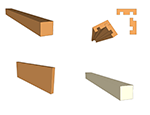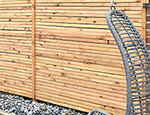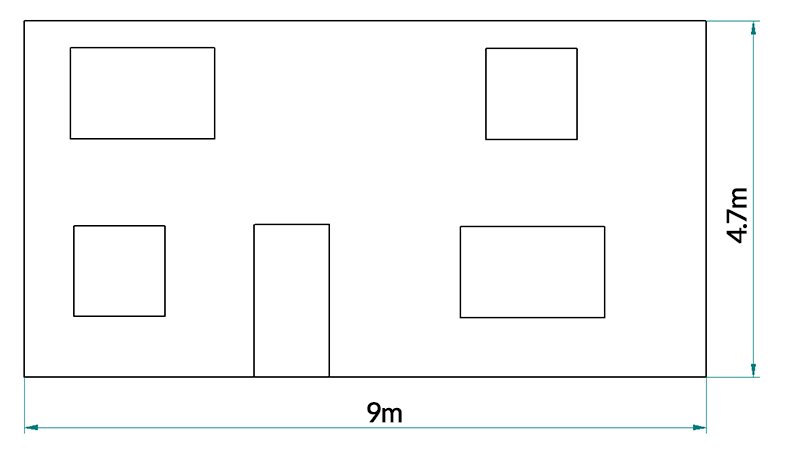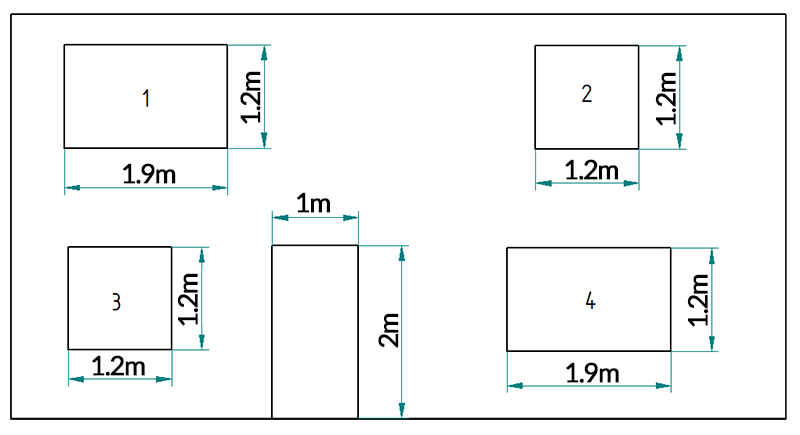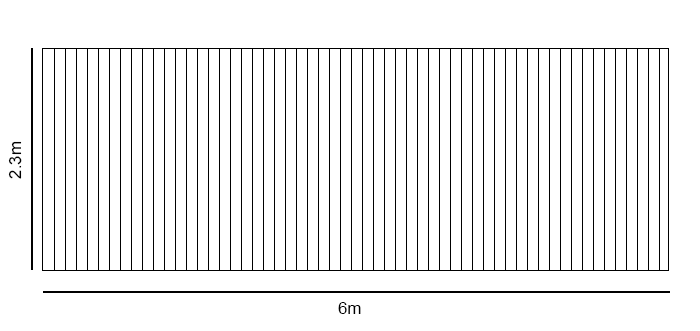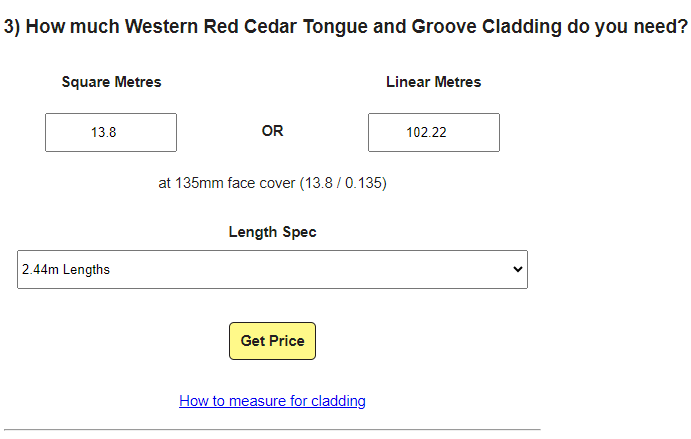British Larch Tongue and Groove Cladding
British Larch Tongue & Groove is quite knotty, with a warm, pale reddy-orange colour.
Photo: British Larch Tongue and Groove

Work out a Price Below
1) Click to choose a Tongue and Groove Cladding profile







2) Click to choose a grade of British Larch
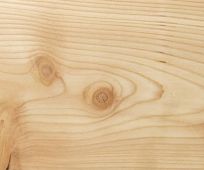
3) How much British Larch Tongue and Groove Cladding do you need?
Related Products
British Larch Tongue and Groove Cladding
There are five profiles of British Larch Tongue and Groove profiles we supply which are:
- IWC1 - 19mm x 145mm overall, with a 135mm face - For horizontal or vertical fitting
- IWC2 - 19mm x 95mm overall, with an 88mm face - For horizontal or vertical fitting
- IWC3 - 19mm x 142mm overall, with a 125mm face - For horizontal or vertical fitting
- IWC4 - 19mm x 145mm overall, with a 125mm face - For horizontal or vertical fitting
- IWC5 - 19mm x 145mm overall, with a 125mm face - For vertical fitting only
Our tongue and groove cladding is more versatile than the other profiles of cladding we supply because the majority of them can be fitted horizontally or vertically. This means that you get the right look for your project. Only IWC5 must be fitted vertically.
British Larch is a great timber which is great for outdoor use because it is durable and resistant to rot. British timbers are becoming more and more popular and our British Larch is a really good British softwood which is priced competitively and gives a characterful, traditional look to your cladding.
The British Larch Tongue and Groove Cladding we supply is usually provided in lengths of 3m and longer. We can provide exact lengths if you need them however we do ask that you call us (on 01889 597281) or talk to us on our online before ordering so that we can check with the supplier. If we confirm we can provide the lengths you need, please enter them into the “Special Instructions” box on the shopping basket page.
Treatments
Most people leave their timber to go the traditional silver-grey in the sun. We recommend talking to www.wood-finishes-direct.com if you would like to treat your timber. If you do decide to treat your timber, it needs to be treated all the way round including the ends to prevent moisture getting in at all.
- Scott Parker
Used previously and been very satisfied with service and value.
- Andrew O'Dare
The person I spoke to on the phone was very helpful, and the receptionist was lovely. I found the website very easy to use.
- Steven Millar
Very easy. Please don't change it!
- David Le Versha
Clarity of website and up front pricing. Good phone support and quick delivery of samples. Thanks.
- Daniel Morriss
Fresh Sawn Merchantable Grade
Product Code: IW-18-18-29-2
Specify: Fresh Sawn Merchantable Grade Larch, British External Cladding Tongue and Groove Cladding from iWood Timber
DELIVERY TIMES
Our timber is imported straight from sawmills on the continent. Our usual lead times are therefore 10 to 15 (Sawn) and 15 to 20 (Machined) working days.
WHAT ARE YOUR DELIVERY COSTS?
We calculate our delivery costs based on how far away you are from us, to get more information on this please check out our shipping costs page.
DELIVERY DAY
Our delivery lorries visit different parts of the country on different days, so once your order is ready we will work with you to arrange a delivery day for when one of our lorries is in your area. We will always arrange the delivery day in advance with you.
DELIVERY TIMES
We deliver weekdays Monday to Friday between the hours of 8am to 5pm. Our delivery vehicles will have multiple jobs on them which can affect the delivery time to you, depending on factors such as traffic and how long it takes to offload the previous jobs. The driver will call you in advance with an estimated time of arrival to make sure you'll be there.
HOW DO I PLACE AN ORDER FOR CLADDING?
You can place your order online by working out your price above and adding your items to your shopping basket. You can then check out and your order will be processed securely and a confirmation email sent. Once your order arrives in our depot, we'll give you a call to arrange delivery.
CAN I ORDER SAMPLES?
Yes you can, you can order samples of certain timbers at www.iwood.co.uk/sample-request/. If the species you need isn't there please give us a call or talk to us on our online chat.
The timbers shown are planed all round samples and are not profiled.
Call our seasoned sales team on 01889 597 281.
Send us a message through our Contact Form.
Email your cutting list to enquiries@iwood.co.uk.







 Main Menu
Main Menu


 Added to Basket
Added to Basket